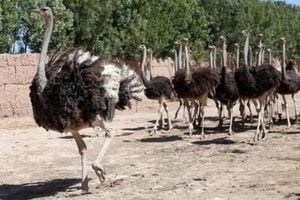Taranaki Maunga, the revered mountain of New Zealand’s North Island, has officially been granted legal personhood, marking a significant step toward justice for the Indigenous Māori people. On February 1, 2025, New Zealand’s Parliament passed the historic law, bestowing Taranaki Maunga with the same rights as human beings. This makes it the latest natural landmark to receive such recognition, following similar moves for the Whanganui River and Te Urewera forest.
This recognition acknowledges the long history of injustices faced by the Māori, particularly the theft of their ancestral lands after colonization. Taranaki Maunga, standing at 8,261 feet, is not just the second-highest mountain on the North Island but also plays a pivotal role as part of Māori cultural heritage. For many indigenous people, Taranaki is viewed as their ancestor, or "maunga tupuna."
Debbie Ngarewa-Packer, co-leader of the Māori Party, celebrated the milestone, stating, "Today, Taranaki, our maunga, our maunga tupuna, is released from the shackles, the shackles of injustice, of ignorance, of hate." She expressed pride for the recognition, which serves as both reparations for past wrongs and as reaffirmation of the mountain’s significance to their cultural identity.
The law grants Taranaki Maunga, now referred solely by its Māori name, the rights, powers, duties, responsibilities, and liabilities of personhood. This creates what is termed "Te Kahui Tupua," which views Taranaki as "a living and indivisible whole." The law also restores the Māori names to the surrounding peaks, taking another step toward reclaiming their cultural heritage.
The decision to recognize the mountain’s personhood is part of New Zealand's broader reparative justice initiatives. Following the breaches of the Treaty of Waitangi during colonization, Māori have sought restoration of rights and recognition of their cultural practices. This treaty, signed among Māori and the British Crown, was supposed to safeguard the rights of the Indigenous people to their lands. Unfortunately, the treaty's different interpretations led to unjust confiscations. One significant loss occurred during the 1860s when large swaths of Taranaki land—including the mountain itself—were seized by the Crown.
Paul Goldsmith, the lawmaker responsible for driving forward settlements between the government and Māori tribes, acknowledged the mountain’s importance as he spoke to Parliament. He reflected on the colonial history, stating, "Traditional Māori practices associated with the mountain were banned, but today we reclaim our rights." This sentiment resonates deeply within the Māori community, as many have long viewed the mountain not merely as land but as an integral part of their identity and heritage.
Just as the recognition of Taranaki follows previous legislation granting personhood to Te Urewera and the Whanganui River, it reflects growing international attention to the rights of nature. New Zealand was the first country globally to pursue this avenue, seeking to address environmental concerns by recognizing natural entities as living beings. The legal personhood status of Taranaki Maunga is expected to provide stronger protections for the mountain's health and wellbeing, preventing any forced sales and ensuring traditional uses are respected.
During the final reading of the bill, the gallery erupted in applause, and many Māori community members sang waiata, traditional Māori songs, celebrating their culture and the recognition of their ancestral connections. People traveled from Taranaki to be present at the capital, Wellington, emphasizing the collective significance of this moment.
The unanimous decision by Parliament, recognized by all 123 lawmakers, signifies the collective acknowledgment of Māori rights at one of the most poignant points of New Zealand’s history, coming after protests against perceived threats to the Treaty of Waitangi and Māori sovereignty. Ngarewa-Packer's assertion during the celebration captured the essence of the moment: “We grew up knowing there was nothing anyone could do to make us any less connected.”
This legal step does not only impact Taranaki Maunga but is emblematic of the shifting narrative surrounding Indigenous rights and recognition. It sets a precedent for other countries contemplating similar recognitions of nature and could inspire other indigenous groups worldwide to seek justice for their historical grievances.
Overall, the granting of legal personhood to Taranaki Maunga mirrors the growing recognition of the importance of the environment and cultural heritage. It serves as both reparation for past injustices and as a commitment to preserving the natural world, shaping the future of Indigenous rights and environmental stewardship. The passage of this law reinforces the idea of deep connections between Indigenous people and their lands, recognizing not just property, but living relationships with the environment.



